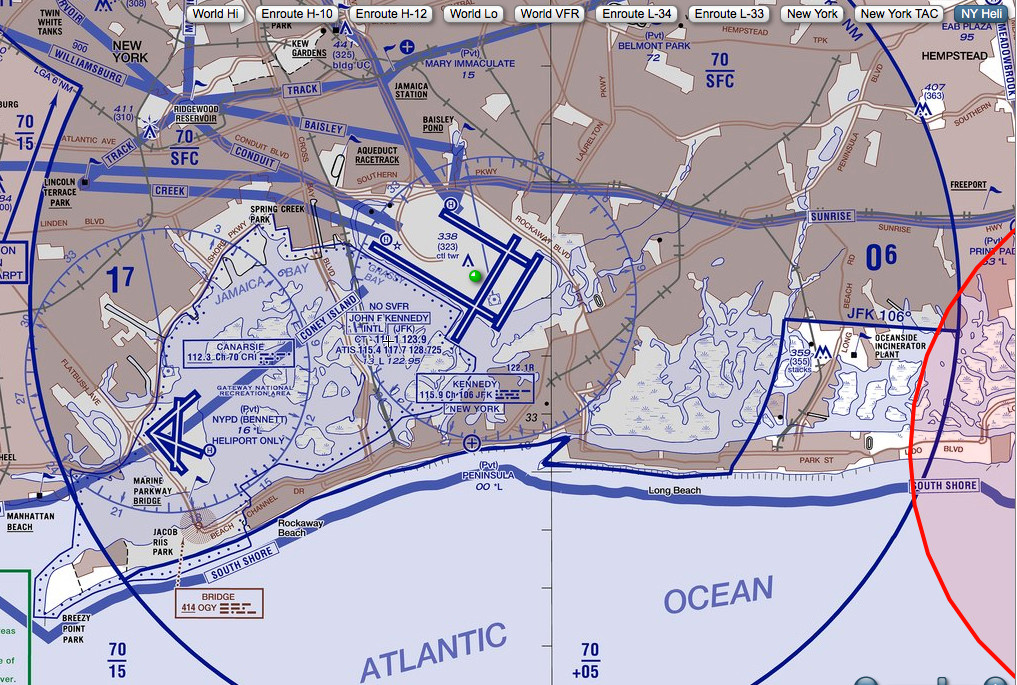Tracking the helicopter complaints
Summer increases number of choppers flying over the South Shore
For people who live near John F. Kennedy International Airport, you would think that helicopter noise would be the least of their issues, considering how many much larger jet airplanes arrive and depart from the Queens facility.
However, with the warmer weather arriving, helicopters heading to eastern Long Island and fly at much lower altitudes than planes, generate noise that could annoy residents in the communities close to JFK.
“They follow the inlet, then cut the corner,” Pt. Lookout resident Philip Steiner said, about choppers he has seen fly across the shoreline community.
Steiner voiced his concerns at a Town-Village Aircraft Safety and Noise Abatement Committee meeting at Atlantic Beach village hall on May 22. TVASNAC is made up of 13 Town of Hempstead communities: Atlantic Beach, Cedarhurst, East Williston, Floral Park, Garden City, Hewlett Neck, Inwood, Lawrence, Malverne, New Hyde Park, Stewart Manor, Valley Stream and Woodsburgh.
The committee’s representatives attend monthly meetings and meet with Federal Aviation Administration and Port Authority officials to mitigate aircraft noise and address the environmental concerns of residents and business owners near Kennedy and LaGuardia airports.
Robert Grotell from the Eastern Region Helicopter Council spoke at the Monday meeting and explained the routes the helicopters take, and how that drives the aircraft traffic that flies overhead the South Shore of Nassau County and the eastern part of Queens.
Originally the Northeast Helicopter Operator Council, the group was established in 1977 by helicopter pilots interested in instrument flight rules for choppers. IFR is one of the two sets of regulations governing civil aviation operations; the other is visual flight rules.
Helicopters flying across Long Island, usually heading to the Hamptons, originate at three main heliports in Manhattan, Grotell said: Wall Street, East 34th Street and West 30th Street. The West 30th Street heliport is the only one open 24 hours, seven days a week, he added.
The choppers taking off from those heliports are only allowed to follow a trio of routes. There is the North Shore Route to Orient Point; the Track Route that lines up with the Long Island Expressway; and the South Shore Route that follows the coastline. The North Shore Route is used the most, Grotell said.
“For the most part, the traffic you’ll be experiencing is corporate that is going to and from the Hamptons,” he said. Grotell, who displayed the routes, along with other aviation markings on a huge map. He noted that the chopper trip is a timesaver slicing a typical three-hour car trip to the eastern end of Long Island down to 35 minutes.
Helicopter traffic most likely increases on Thursday and Friday, lessens on Saturday and then resumes to a greater degree later on Sunday afternoon, Grotell said. “Altitude is the best noise mitigation, besides, of course, not flying in the area,” he said.
With the South Shore Route being near JFK, choppers flying in the area have to adhere to specific altitude restrictions, Grotell noted. But the distance helicopters can be over the water is a suggestion not mandated, he added.
Before Steiner voiced his complaint, Grotell said: “One-engine helicopters don’t operate over water, close to the shore, in compliance with FAA regulations.” Single-engine choppers are not equipped for overwater operation and need to fly close to the shore to land safely if they lose power, according to the FAA.
“The helicopter industry wants to work with you and will go back and investigate a problem,” he said. The Eastern Region Helicopter Council’s website address is www.erhc.org.






